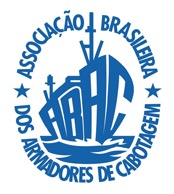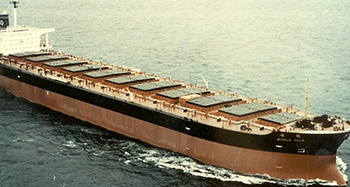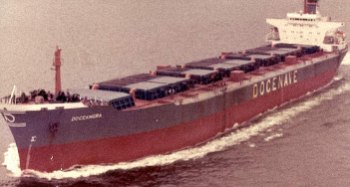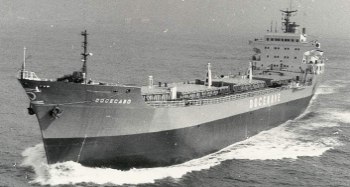
Fundation
ABAC – Brazilian Association of Cabotage Shipowners – was founded on March 12, 1973, at Rua Sacadura Cabral, 120 rooms 1004/1005, in the center of Rio de Janeiro. When it was founded, ABAC was part of Syndarma, the National Union of Offshore Navigation Companies – Syndarma.
According to the founding minutes, the objective of creating the Association was “To bring together Brazilian shipowners, who have authorization from the National Superintendency of Merchant Marine SUNAMAM for Cabotage traffic, aiming to:
1. Defense of the legitimate interests of this branch of offshore activity;
2. Defense of the specific interests of each member, if these meet the greater interests of the association itself;
3. Defense of the interests of the national economy.”
Among the issues defended by the Association and forwarded to SUNAMAM were the forms of remuneration for dockers, foremen, repairmen and checkers; the readjustment of freight rates; changes to cabotage lines; the costs of fuel and lubricating oils; and the rights to Additional Freight for Renewal of the Merchant Marine.
On February 4, 1997, after approval by the ABAC Assembly and Syndarma’s EGM, the merger of ABAC’s administrative services with Syndarma was approved, maintaining its legal identity, within a policy of greater union of shipowners and reduction of expenses. This merger lasted until June 2019, when ABAC decided to leave Syndarma. The decision to leave the Union focused on the need to focus the agenda on the development of cabotage, which occupies an increasingly significant place on the national scene.
Board
The first board of directors of ABAC, from 1973 to 1974, was composed of Chairman Manoel Martins Lima (Casimiro Filho Ind. e Com. S/A); José de Ribamar Ribeiro Salomão (Conan – Cia de Navegação do Norte); Farith Mansur (Navegação Mansur); José Fonseca de Oliveira (H. Dantas Comércio Navegação e Indústria Ltda); and Abílio Ramos (Navegação Antônio Ramos).
Other chairmen made history at ABAC:
Eng. Thomas Henrique Furía (Brasilmar Navegação) – 79/81
João Marcos Dias (Chaval Navegação) – 81/85
Meton Soares Jr. (Cia. de Navegação Marítima Netumar) – 85/87
Paulo Eurico de Freitas (Chaval Navegação) – 87/89
Sergio Henrique Salomão (Conan – Cia de Navegação do Norte) – 89/97
Hugo Pedro de Figueiredo (Cia. de Navegação Norsul) – 97/2011
Cleber Cordeiro Lucas (Log-In – Logística Intermodal S.A) – 2011/2021
Mark Piotr Juzwiak (Aliança Navegação e Logística Ltda) – 21/23
A little about the history of cabotage and the importance of ABAC in defending the industry
In Brazil, cabotage was widely used in the 1930s in the transport of bulk cargo, being the main mode of transport used when the railway and road networks presented precarious conditions for the transport of cargo. At that time, cabotage companies were predominantly family-owned.
After the election of President Washington Luiz, whose campaign slogan was “Governing is building roads”, investments were directed to paving roads, building roads and maintaining the road network. This situation persisted for several decades, and the waterway sector suffered the consequences, gradually losing space in the Brazilian transport network.
To change this scenario, between the 50s and 60s, the Merchant Marine Fund (FMM) and the National Merchant Marine Superintendency (SUNAMAM) were created, which aimed to boost shipbuilding in the country, raise resources in port infrastructure, establish navigation lines to be followed regularly by companies and adapt the Brazilian fleet to meet the internal demand that had migrated from the road transport mode. Such measures did not produce the expected results. Over time, cabotage started to transport only part of the liquid and solid bulk cargo, which are of large volumes and low added value. As a result, there was a predominance of road transport on long distance routes, which are typical of cabotage transport.
With the creation of containers in the 1960s in the United States and their use throughout the world, in 1990, some companies began maritime container transport operations via cabotage on the Santos – Manaus line, to make the waterway mode viable, which corresponded to 18.4% of the total against 56% for road transport. The increase in oil (even though diesel was subsidized for the road sector), the increase in tolls and the privatization of roads contributed to the increase in road freight. Given the context of high levels of road freight, the alternative of cabotage proved to be propitious and opportune, despite problems in the port infrastructure.
In parallel, in 1997, after a long debate in Congress, Law 9,432/97 was concluded, which included intense participation from representatives of shipping companies, the naval industry, offshore workers and a strong role from ABAC. The new law came to comply with the provisions of the new Federal Constitution, the end of the famous “freight conferences”, and to try to place Brazilian shipping in the liberalizing mold of the time. Following the global trend, this law dealt with the second registration and how to establish the Brazilian Special Registration. The REB, however, was not implemented due to conflicts with other legislation, frustrating its main objective, which was to reduce the operational cost of the Brazilian shipping company.
It was only in 1999, with the economy stabilized and inflation rates under control, that the country resumed its growth and enabled a new investment in coastal shipping, including general cargo ships and container ships.
Still with the aim of promoting navigation, Law no. 10,893 was edited. The standard updated the rules for the Freight Additional for the Renewal of the Merchant Marine – AFRMM and the Merchant Marine Fund. Always aligned with the interests of the sector, once again ABAC was fundamental in advancing these agendas.
Both Laws 9,432/97 and 10,893/04 are the major legal frameworks for the sector and have allowed investments and growth in cabotage in recent years. Since then, the transport of containerized cargo has been growing, and, in the last 12 years, at annual rates above 10%, especially due to the growing offer of door-to-door services, with companies acting as multimodal transport operators.
On the other hand, bulk cargo depends on the establishment of industrial projects, with cabotage responsible for transporting inputs (most common) or semi-finished or finished products, or even inputs for another production line. Thus, the growth of bulk movement occurs in leaps and bounds, while new projects are not created and developed. It is common for this type of long-term projects to acquire customized ships in order to optimize the activity.
In 2020, in order to strengthen this sector that is essential for economic growth, the Federal Government, after listening to several sectors involved in cabotage activity, including several meetings with ABAC, sent the BR do Mar project to Congress (PL 4.199 /20).
Despite the intense debate and divergences in positions taken by the government, workers, the naval industry, and shipping representatives, today we have in force the modified Law 9,432/97 and Law 10,893/2004 and Law 14,301/22 (BR do Mar Cabotage Incentive Program).
(Source: PortoGente and ABAC)


